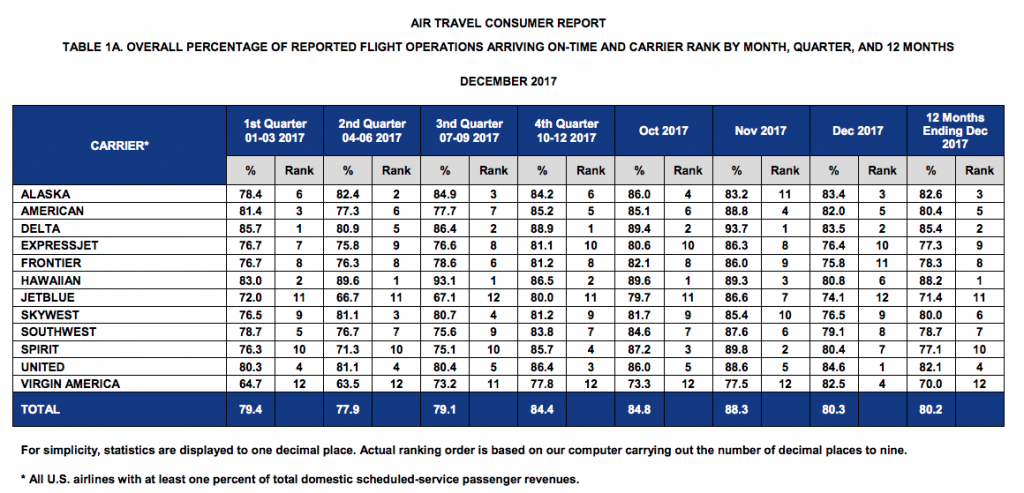As the traveling public becomes more discriminating about which airline it flies and who’s the best at getting them where they’re needing and wanting to go on time, the annual Air Travel Consumer Report, a compiling of data submitted to the U.S. Department of Transportation and the Bureau of Transportation Statistics, reads like a tell-all tabloid.
And despite the crushing media stories about some problems, the airline industry has improved its performance year over year.
For example, 2017 was the lowest year for bumped passengers since 1995. The rate — just .034 for every 10,000 passengers — is half the rate of .062 of 2016.
That number doesn’t account for travelers who accepted travel vouchers or offered to give up their seats on overbooked flights, two of the ways airlines reduce the statistic they have to report to the Bureau of Transportation Statistics.
Cancellations, on-time performance, tarmac delays, flights that are chronically delayed, and the causes of flight delays are also detailed in the report. The overall on-time rate was 80.2 percent, a small decline from 2016 when the number was 81.4 percent. That makes the numbers reported by the top three airlines exceptional.
Hawaiian Airlines led the way in on-time performance with 88.2 percent on-time arrivals. Delta Airlines was second, with 83.5 percent, and Alaska Airlines rounded out the top three with 83.4 percent. According to the report, “a flight is counted as ‘on time’ if it operated less than 15 minutes after the scheduled time shown in the carriers’ Computerized Reservations Systems (CRS).”
The reporting of on-time arrivals is particularly important because the report shows that the number one cause of delays for passengers was due to late arriving aircraft (6.74%). The second leading factor contributing to delays was air carrier delay, which is defined as circumstances due to maintenance or crew that are within the airline’s control. That accounted for 5.46 percent of delays in December.
The report’s quarterly figures also highlighted unusually high tarmac delays for December 2017, as 96 flights reported tarmac delays of three hours or more.
While that seems unusually high, there’s actually a good explanation for it: 77 tarmac delays were from planes that were held away from the terminal at Atlanta’s Hartsfield International Airport due to the December 17 power outage. Another 14 were delayed departing from Atlanta because of a snowstorm on December 8. This makes the actual number of flights with an on-tarmac delay of three hours or more only 5 for for December 2017.
The airlines are listening to customer complaints and are doing everything they can to make our flights a more comfortable experience, and that shows in the improved numbers of 2017 over 2016.
Have you noticed an improvement in performance, or do you have your own story to tell? Share it with us in the comments below, on our Facebook page, orin our Twitter stream.
Photo credit: U.S. Department of Transportation (Public Domain)

